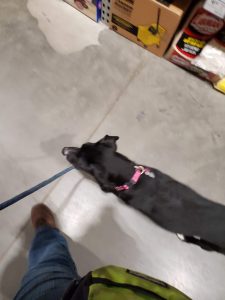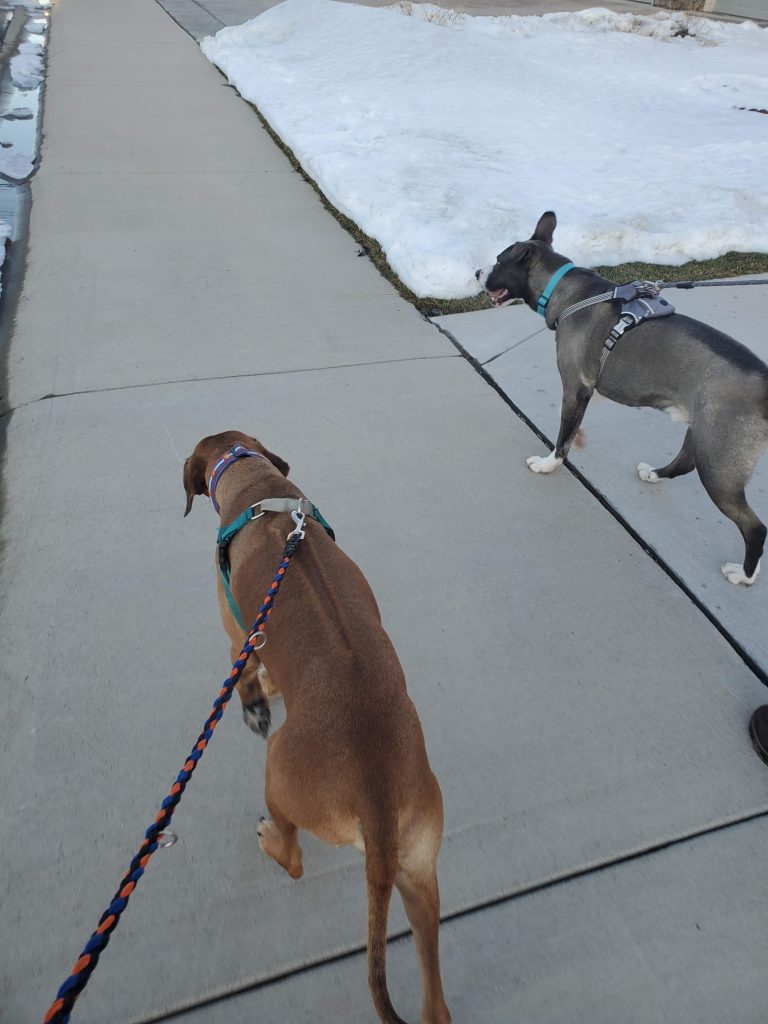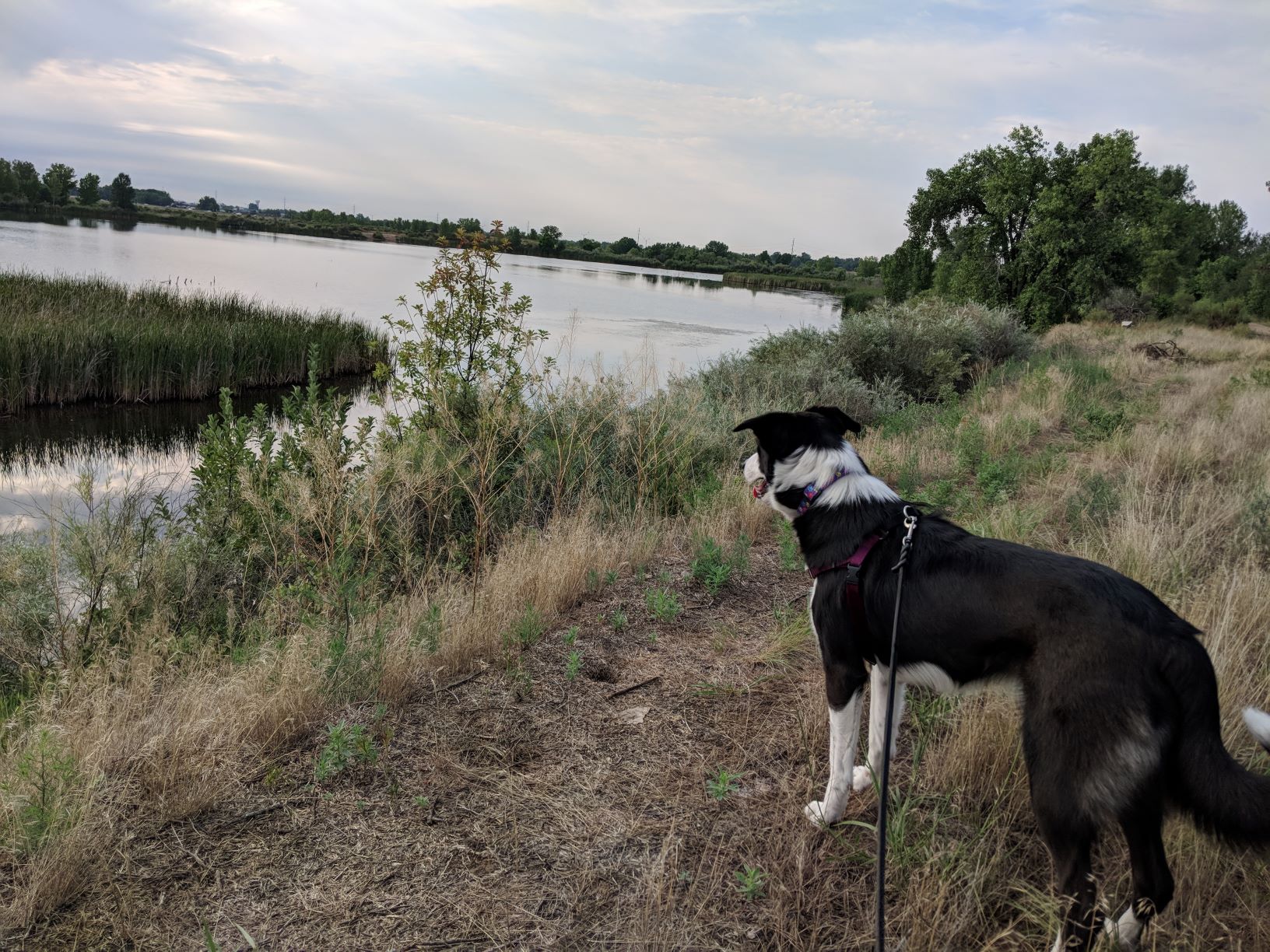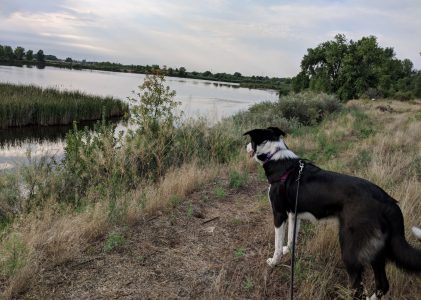While watching the latest stand-up special from one of my favorite comedians, Mike Birbiglia, he stated something that is all too true for dogs and people alike. He said, “My wife and I hate going to parties, but we love leaving parties.” Relief from something you don’t enjoy is a sweet feeling, one that dogs enjoy as much as people. The opportunity to move away from something unpleasant is a reinforcer of behavior, a dog or human will increase the frequency of a behavior that makes something they dislike go away. My goal is to avoid knowingly exposing a dog to something unpleasant for the sake of a training session or socialization experience, at least not at a proximity that the dog finds uncomfortable. However, I have found in many years in dogs, that it’s common to find yourself faced with something the dog finds scary or unpleasant. It may be something you exposed them to, not knowing that they would not enjoy it, or it is something that just appeared, because you can’t control the world, and now you have to help them recover.
Get Outta There!
Your number one goal when your dog starts feeling uncomfortable with something in their environment is to create distance. Once the dog starts feeling emotional (fearful, reactive, upset, etc.) about the thing, the dog isn’t learning anything good. Retreat until your dog can think again, which will be evidenced by their ability to give their attention to you, and respond to known cues. It’s important that while you are creating distance you aren’t negotiating with the dog about whether or not they want to move away, because in many cases they don’t want to move away, but they NEED to. I teach my clients a process of walking up the leash, hand-over-hand, so that you move closer to the dog, and then planting your leash hand right at your core and turning 180° and walking away. If dealing with a smaller dog (who is unlikely to bite), you can pick them up and move them away from a situation. I like to practice these “Get Outta Dodge!” moves frequently, with no/low distractions and lots of yummy treats. This makes the retreat a fun game that you play, rather than becoming associated with stressful situations.
Approach and Retreat
Once you’ve gotten your dog’s head back in the game, we need to look at how to teach the dog that this situation isn’t as scary as they might perceive it to be (caveat – if the situation actually IS scary, just get out of there – this may differ dependent on your dog and your situation, but off-leash dogs, loud construction noises, or crowds of kids in the street might be better to avoid altogether!). The idea behind Approach and Retreat is that there is safety in knowing that you can get out of a situation. If your dentist were to tell you that you must lie still and comply no matter what they do inside your mouth, that could be very anxiety inducing. If they tell you to tap your shoulder if you feel uncomfortable and they will stop, chances are you are much more likely to “be brave” and lie still, because you know there is a way to opt out if you need to. You may feel a pain in your tooth, but tell yourself, “that was painful… but I can handle it, if it gets any worse I can ‘tap-out’”, and thus you continue to endure the discomfort. Similarly, we want to teach our dogs that they can opt out of a scary situation, which increases their confidence to handle those situations.

In order to use Approach and Retreat, it’s important to understand where your dog’s threshold is in a given situation. For the purposes of this exercise, it’s easiest to look at the moment where the dog’s body language changes from “not noticing” to “noticing”, or “not upset” to “mildly upset”. We want to work right around that line, and avoid going close enough to get to “fixated” or “very upset”. This is obviously easiest to do with a set-up training situation where you can control more aspects of the environment. However, you can teach your dog a lot in a few moments of Approach and Retreat in a real-life situation, and once they understand the pattern, it will be easier and easier to use. If your dog is very emotional about certain situations, I recommend doing this kind of work with a professional trainer. It’s not always easy to read a dog’s body language when they are close to or over threshold, and you may need an expert set of eyes to help you.
The implementation of Approach and Retreat is a lot what it sounds like, but there are some nuances that I want to point out. You want to let the dog use as much of their leash as possible, so that you are not using the leash to control their movement. You also want to make sure your dog is wearing comfortable equipment for making quick turns, my favorite being a front-clip harness. On a loose leash, allow your dog to start to approach the unpleasant thing from a large enough distance that they are comfortable at the start. As soon as you see the smallest shift in body language, such as their ears going forward (or back, it’s the change you are looking for!), their muscles tensing, or their tail carriage changing – you will make your 180° turn while encouraging them to come along with you. If you’re doing it right, you won’t have to retreat too far before your dog is back to focusing on you, at which point you can reward with a treat. Then you turn around to approach again, keeping your leash loose, and looking for the smallest shift in body language. You will start to see that your dog is able to get closer and closer without having an emotional meltdown!
What is the dog learning?

When you use Approach and Retreat, the dog learns several things. One is that you’ve got their back, and aren’t going to drag them into situations where they feel uncomfortable. Even dogs who appear to want to rush in to situations actually feel better when they learn they don’t have to do so. Dogs learn that they are being listened to, and that helps them feel more confident in their world. They also learn that calm behavior is reinforced, because you turn around before they start feeling uncomfortable, so it is the calm behavior that increases. The dog also learns that you are predictable, and will handle scary situations in a specific manner. Dogs love this predictability, it helps them to feel safe. Finally, dogs learn that certain situations aren’t as scary or uncomfortable as they once thought. This can only happen when they are allowed to leave the situation, and work through it in their own time. You can’t add pressure to this situation, or you’ll get that boiling over of emotion. The best thing is that when dogs (or humans!) truly learn to overcome fear or reactivity, instead of just learning to “deal with it”, the learning is long-lasting, because it comes from within. As my brilliant mentor Leslie McDevitt says, “Our goal is not merely to change behavior, it is to change how the dog is feeling”.


